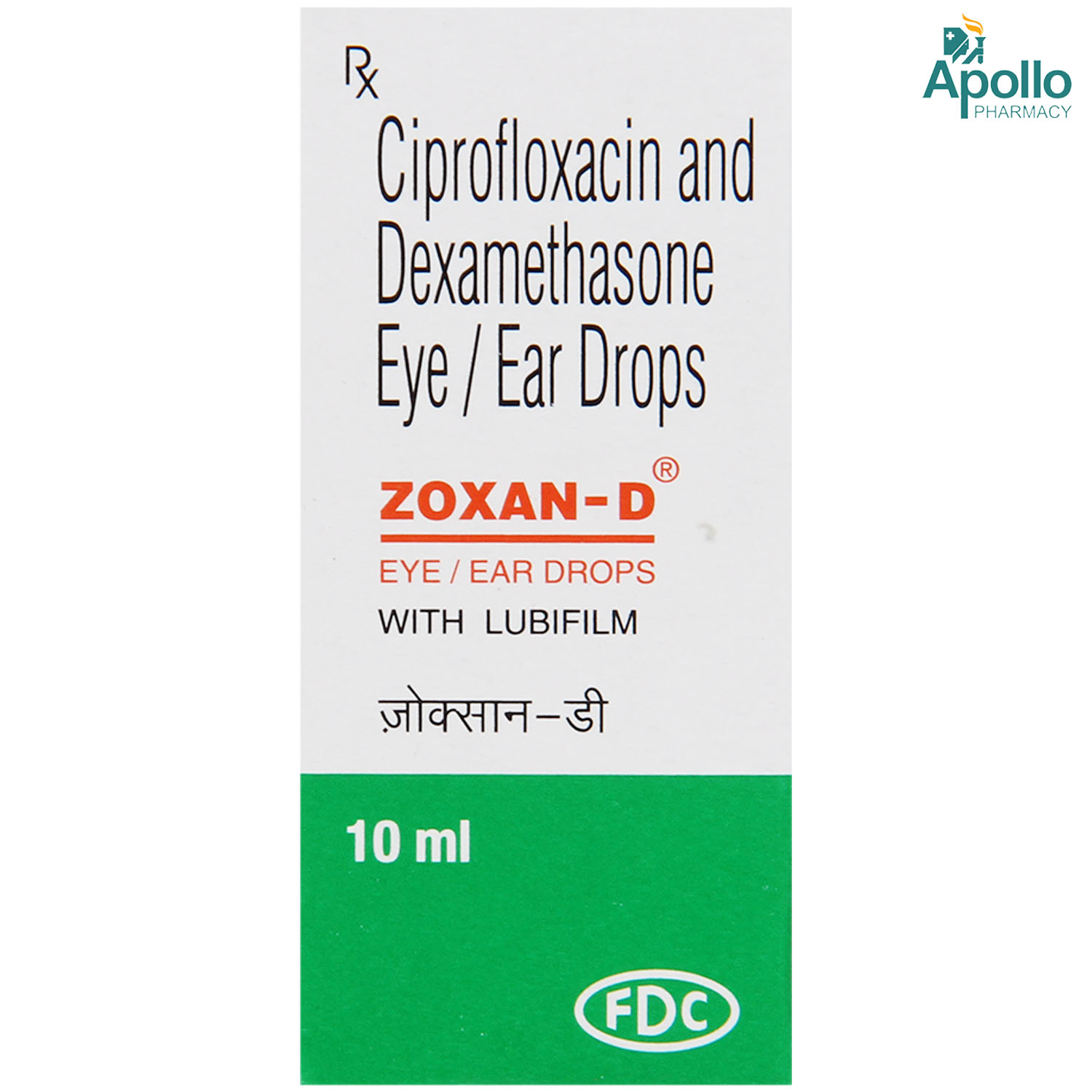Lucipro D Eye/Ear Drops

MRP ₹12.07
(Inclusive of all Taxes)
₹1.8 Cashback (15%)
know your delivery time
Provide Delivery Location
Composition :
Manufacturer/Marketer :
Consume Type :
Return Policy :

Secure Payment

Trusted by 8 Crore Indians

Genuine Products
Therapeutic Class
Country of origin
Author Details
We provide you with authentic, trustworthy and relevant information
FAQs
Disclaimer
Alcohol
Safe if prescribed
No interaction was found. However, it is advisable not to take or limit alcohol as a precautionary measure.
Pregnancy
Consult your doctor
If you are planning to become pregnant or are already pregnant, please consult your doctor before using Lucipro D Eye/Ear Drops.
Breast Feeding
Consult your doctor
If you are a nursing mother, please notify your doctor before beginning Lucipro D Eye/Ear Drops.
Driving
Safe if prescribed
Lucipro D Eye/Ear Drops may cause blurred vision temporarily after using the drops in the eye. Before driving or operating any machinery, wait until your vision is clear.
Liver
Consult your doctor
Limited information is available about the usage of Lucipro D Eye/Ear Drops in patients with liver disease. Please consult your physician.
Kidney
Consult your doctor
Limited information is available about the usage of Lucipro D Eye/Ear Drops in patients with kidney disease. Please consult your physician.
Children
Safe if prescribed
Lucipro D Eye/Ear Drops should be used in children above one year only if prescribed by the doctor.
Product Substitutes
About Lucipro D Eye/Ear Drops
Lucipro D Eye/Ear Drops is a combination of antibiotic and steroid medication used to treat bacterial eye and ear infections. An ear infection occurs when bacteria invade the middle or outer ear, causing pain and inflammation. Bacterial eye infection occurs when pathogenic bacteria enter any eye portion, including the eyeball, conjunctiva, and cornea.
Lucipro D Eye/Ear Drops contains ciprofloxacin and dexamethasone. Ciprofloxacin has bactericidal activity and works by suppressing the enzyme DNA gyrase, which is essential for bacterial DNA synthesis. Dexamethasone is a steroid that reduces inflammation and symptoms associated with infection, such as redness and irritation by inhibiting the chemicals such as prostaglandins that cause inflammation. As a result, Lucipro D Eye/Ear Drops treats bacterial eye/ear infections.
You are advised to use Lucipro D Eye/Ear Drops for as long as your doctor has prescribed it. Sometimes, you may experience certain common side effects, such as discomfort, irritation, stinging sensation, and dysgeusia (taste disorder). Most of these side effects do not require medical attention and resolve gradually over time. However, you are advised to talk to your doctor if you experience these side effects persistently.
Do not use Lucipro D Eye/Ear Drops if you are allergic to any of its components. Talk to your doctor if the irritation persists despite using Lucipro D Eye/Ear Drops for a week or if it worsens. Consult your doctor before using Lucipro D Eye/Ear Drops if you are pregnant or breastfeeding. Please do not touch the tip of the dropper to the eye/ear or surrounding areas as it may contaminate the contents. Lucipro D Eye/Ear Drops should be used in children only if prescribed by the doctor.
Uses of Lucipro D Eye/Ear Drops
Medicinal Benefits Mweb
Key Benefits
Lucipro D Eye/Ear Drops contains ciprofloxacin and dexamethasone. Ciprofloxacin is a fluoroquinolone antibiotic that kills bacteria by preventing their growth. Dexamethasone is a steroid that reduces inflammation and infection-related symptoms such as redness and discomfort. It acts by inhibiting the chemicals that cause inflammation, such as prostaglandins. As a result, Lucipro D Eye/Ear Drops aids in treating eye/ear infections.
Directions for Use
Side Effects of Lucipro D Eye/Ear Drops
- Local burning sensation and discomfort
- Dysgeusia (taste disorder)
- Irritation
- Stinging sensation
Drug Warnings
Do not use Lucipro D Eye/Ear Drops if you are allergic to any of its components. Before using Lucipro D Eye/Ear Drops, inform your doctor if you have vision problems, severe eye pain, glaucoma (high blood pressure), eye damage, eye surgery, hearing problems (cytotoxicity), a perforated eardrum, chronic otitis media, or viral ear infections (herpes simplex otitis externa and herpes zoster otitis external). Notify the doctor if you are pregnant, planning to become pregnant, or are breastfeeding. Contact your doctor if the infection symptoms persist or worsen after two weeks of treatment.
Drug-Drug Interactions Checker List
- WARFARIN
- THEOPHYLLINE
Habit Forming
Diet & Lifestyle Advise
Ear infection:
- Consult an ENT on a regular basis to ensure early detection of any ear problems.
- Avoid consuming foods that you are allergic to as it can cause the body to produce excess mucus, resulting in ear inflammation.
- Avoid getting shampoo, soap, or water into your ears as this can cause itching.
- Poking or scratching the ear can cause damage to the ear canal, resulting in inflammation.
- Using cotton swabs, bobby pins, or other objects to remove earwax may push wax deeper into the ear, causing ear damage.
- Never put cold water in your ear, and avoid spraying liquids into your ear with force.
Eye infection:
- Get at least six to eight hours of sleep each night to renew your eyes.
- Wash your eyes with clean water. If you have had eye surgery, wait at least two weeks before washing your eyes.
- Take care of your health, eat a balanced diet, exercise regularly, and rest well.
- Hydrate well-drink lots of water.
- Wash your hands regularly, and avoid touching your eyes with dirty hands.
All Substitutes & Brand Comparisons
RX
Out of StockKemocip D Eye/Ear Drops
Alkem Laboratories Ltd
₹9.71
(₹0.87/ 1ml)
20% CHEAPERRX
Out of StockBiocip D Eye/Ear Drops
Biochem Pharmaceutical Industries Ltd
₹9.8
(₹0.88/ 1ml)
19% CHEAPERRX
Cifran-D Eye/Ear Drops 10 ml
Ranbaxy Laboratories Ltd
₹21
(₹1.89/ 1ml)
73% COSTLIER

Have a query?





